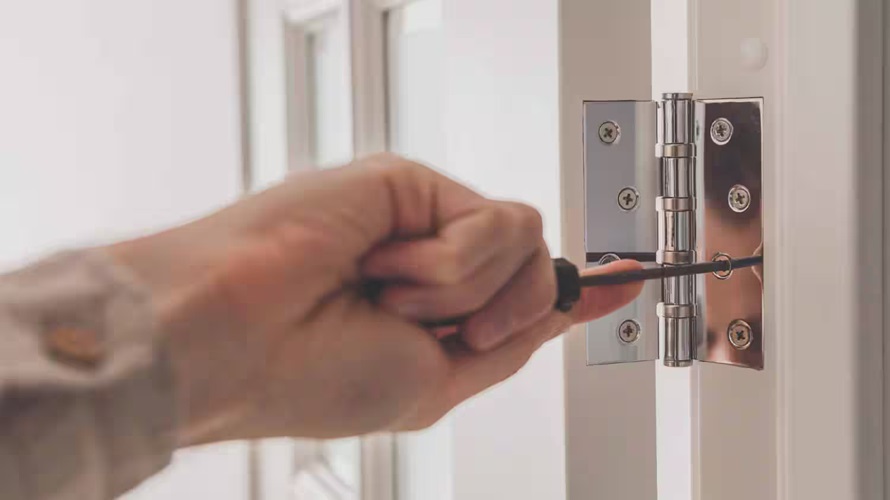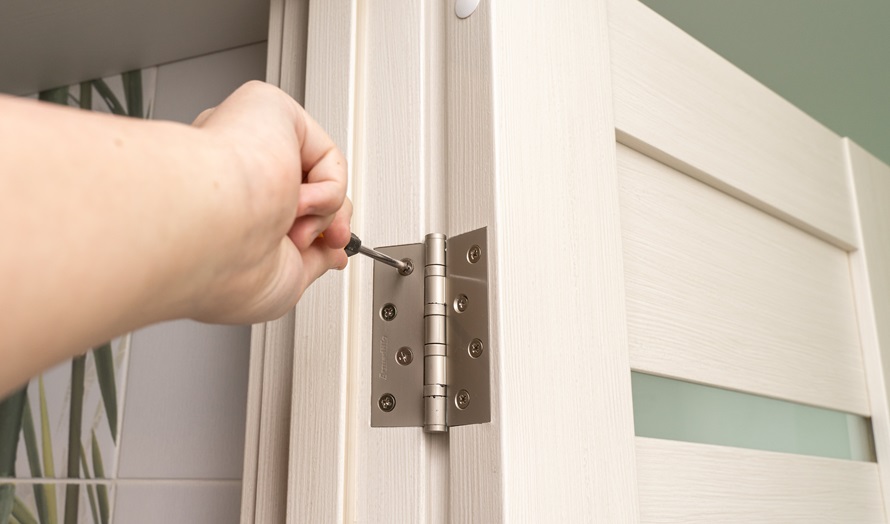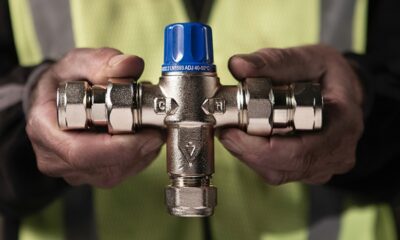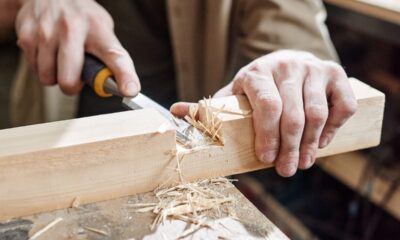Industry
Butt Hinges: The Solid, Secure and Simple Solution for Your Doors
Hinges may not be the centre of focus when you’re installing new doors or cabinets in your home, but they rightfully deserve as much attention during the remodelling process as the fixtures themselves. How squarely a door sits in its frame, how easily it opens and closes, and even how easily it locks depends almost exclusively on your hinges. And just because a hinge is bigger or beefier doesn’t necessarily mean that it’s always better.
The fact is, with so many different types of door and cabinet hinges on the market that are designed to do all kinds of rolling, folding, and even pivoting, choosing the right one can be a challenge. The types of hinges used to hang security doors and garden gates aren’t the same as the ones used on bathroom cabinets or folding den doors. Every type of hinge has it’s own unique qualities and benefits, but only butt-style hinges are adaptable enough to satisfy any job.
Rugged Butt Hinges are the Replacements You Can Trust

source: angi.com
From the soft closing, spring-loaded hinges used on cabinets, to the tough, marine-grade livewell hatches on boats, it’s no coincidence that heavy-duty hinge butt assemblies are the most commonly used hinges anywhere. They combine strength, versatility, and reliability into a single hinge assembly the way no other style of hinge can; that makes them the perfect choice for any type or size of door, gate, hatch, or other swinging assembly.
Rugged butt-stye hinges are easily recognised by their two matching and interlocking metal plates (leaves) that form a barrel-shaped knuckle where they’re joined. Crucially, the leaves aren’t limited by their size or thickness, and are held together by a single pin – both attributes that underline their simplicity. There’s nothing fancy or complicated about butt hinge design, which is why they’re so highly regarded among tradies, chippies, and professional door hangers when it comes to:
- Amazing durability. Regardless of whether they’re used indoors or outdoors, butt-style hinges are durable enough to support even the heaviest doors under the highest traffic volumes.
- Unparalleled versatility. With a virtually unlimited range of shapes, finishes, and treatments to choose from, butt-style hinges are suitable for all kinds of residential, commercial, and industrial doors, gates, and cabinets.
- Uncommon reliability. Unlike other types of hinges, the predictable reliability of butt-style hinges means that if an assembly ever requires more than occasional lubrication, repairs are simple and straightforward.
Regardless of whether you’re prepping for a renovation or not, if you’re contending with a door that squeaks excessively, has started to sag, or is having difficulty swinging, there’s an excellent chance that the hinges have begun to fail.
You don’t want to ignore the problem, but you also don’t want to resort to knee-jerk remedies like sanding down parts of your door, or taking a hammer to your frame or casing intent on realigning it by force. What you want to do is replace the offending hinges, and hinge butt solutions are the ideal replacements.
How to Recognise the Main Types of Butt Hinges?

source: angi.com
From the lightweight, corrosion resistant piano-type hinges used on ute tool boxes, to the heavyweight lift-off type hinges that are used on easy access doorways, there’s no shortage of specialised, and incredibly functional butt-style hinge assemblies to choose from. There are three main types, however, that are used for the bulk of interior and exterior door, hatch, and cabinet barriers.
- Plain-bearing butt hinges. Relying entirely on their pins to swing, these metal-on-metal assemblies are the simplest and least expensive of all butt hinges, and are the overwhelming preference for lightweight entrance, closet, and cabinet doors.
- Grease-packed butt hinges. Grease-packed hinge assemblies are effectively the same as plain bearing assemblies, but are outfitted with a grease-packed flat bearing to help reduce friction.
- Ball-bearing butt hinges. Ball-bearing assemblies are designed for the heaviest doors and barriers, and feature permanently lubricated bearings around the centre pin that allows them to swing smoothly.
Of course, factors like leaf thickness (gauge), the diameter of the knuckle and barrel, and even the pitch (spacing between the end of one knuckle to the same end of the next knuckle) all have an affect on how a hinge assembly performs. That’s why it’s so important when the condition and levelness of the frame could possibly lead to hinge-assembly problems, you want to be sure to use the simplest, and most reliable types of hinges available: the butt design hinges.
Material Properties That You Want With Butt Assemblies
Make no mistake: while there’s no question about their core qualities, you have to be just as familiar about where your hinges are being installed as the type of hinges you’re installing. It’s natural to want to use the toughest butt-style hinges available if you plan to mount a heavy exterior door; but if you live near the shore, neglecting to be sure that the assemblies you’ve selected are marine-grade could result in a host of unwanted door problems in a matter of months. That’s why you want to pay attention to the material properties you’d need when you’re ready to install your doors and hinges, including:
- Strength. Heavy doors and gates require hinges made from the strongest materials; and galvanised, and 304 stainless steels are the materials of choice for the most robust assemblies.
- Weight. Lightweight doors, and door and cabinet frames generally can support the heaviest assemblies; that’s why the best solutions for them are spring-loaded self closing, and two-position type hinges that are light weight and won’t damage a frame or casing.
- Corrosion resistance. Not only are galvanised and stainless steel assemblies also ideal choices for salty and corrosive environments, but so are zinc plated, as well as marine-grade nylon units.
- Heat resistance. Galvanised steel hinges are the optimum choice for residential and commercial fire doors, as well as persistent high temperature industrial environments like bakeries, laundries, and power generation facilities.
- Impact resistance. Security doors and screens demand hinge assemblies that are as robust as the barriers themselves, which is why thick, stainless steel hinges are the best choice to withstand the kind of forceful impacts that might otherwise rip a proverbial door away from its hinges.
No matter your requirements in hinges, butt type assemblies are guaranteed to let you realise the best that your doors and fixtures have to offer.
The Final Word
At the end of the day, while it’s easy to overlook your door and cabinet hinges when you’re undertaking a big project, doing so can lead to a host of unwanted problems. Not only can ineffective hinges prematurely fail or result in door frame damage, they can ultimately compromise the integrity of the doorways or enclosures you’re expecting them to safeguard.
That’s why you want hinges that are solid, simple, and above all, secure. Heavy-duty butt assemblies offer all the security and reliability you could ask for in a hinge. They’re the best hinges around, and are suitable for any application that you have.












